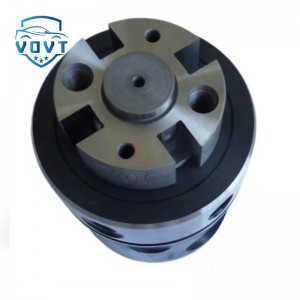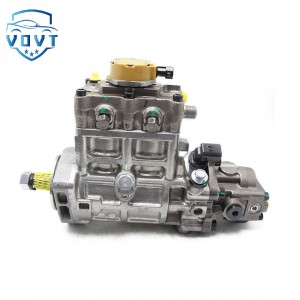Good Price Diesel Pump Head Rotor 096400-1581 Fuel Injection Pump Elements Engine Spare Parts
products description
| Reference. Codes | 096400-1581 |
| Application | / |
| MOQ | 2PCS |
| Certification | ISO9001 |
| Place of Origin | China |
| Packaging | Neutral packing |
| Quality Control | 100% tested before shipment |
| Lead time | 7~15 working days |
| Payment | T/T, L/C, Paypal, Western Union or as your requirement |
How to maintain and service the pump head?
Daily basic inspection (before each start/after work)
Appearance and leakage inspection
Observe the surface of the pump head and the oil pipe interface. If oil stains or dripping are found (especially the joint between the plunger sleeve and the pump body, and the oil outlet valve seat), the machine must be stopped immediately for inspection:
Minor leakage may be due to aging of the sealing copper gasket, and the high-pressure resistant seal (mostly made of copper or coated metal) needs to be replaced;
Serious leakage may be due to wear of the plunger pair or scratches on the sealing surface of the oil outlet valve, which requires disassembly and inspection.
Check whether the pump head fixing bolts are loose (vibration may cause the bolts to loosen), and tighten them according to the specified torque (usually 25-40N・m, depending on the model).
Oil level and oil quality inspection
If the pump head has its own lubrication chamber (such as some electronically controlled pumps), it is necessary to check the amount of lubricating oil (add the same type of oil when it is below the scale line), and observe whether the oil is emulsified (water inflow) or contains metal debris (internal wear). If abnormalities are found, replace the lubricating oil immediately and investigate the cause.
The fuel filter needs to be drained daily (especially in humid environments) to prevent water from entering the pump head and causing rust (water will destroy the oil film on the surface of the plunger and accelerate wear).
Regular deep maintenance (according to operating hours/mileage cycle)
(I) Cleaning and filtration system maintenance
Fuel filtration system:
Replace the fuel coarse filter and fine filter element every 500-1000 hours (or 10,000-20,000 kilometers) to prevent impurities (such as rust and dust) from entering the pump head and scratching the plunger parts or the sealing surface of the oil outlet valve.
The filter element must be original or certified brand (the filtration accuracy must be below 5μm). Poor quality filter elements may cause early wear of the pump head due to filtration failure.
Pump head internal cleaning:
Every 2000-3000 hours, the pump head oil channel can be circulated and cleaned with a special cleaning agent (such as diesel system cleaning agent) to remove carbon deposits (products of incomplete combustion of fuel) and colloid (products of fuel oxidation) to avoid oil channel blockage and fluctuations in fuel supply pressure.
(II) Inspection and maintenance of precision parts
Plunger parts:
After disassembly, check whether the plunger surface has scratches, scratches or coating shedding (normally it should be smooth and without traces). If the wear exceeds the standard (fit clearance > 0.005mm), the whole set needs to be replaced (the plunger or plunger sleeve cannot be replaced alone, otherwise it will affect the sealing).
Rinse with clean diesel before assembly to avoid direct contact with fingers (salt in sweat may cause rust). Apply a small amount of clean engine oil for lubrication during assembly.
Oil outlet valve parts:
Check whether the sealing cone surface of the oil outlet valve is worn or concave, and whether the pressure relief ring is smooth (wear may cause the injector to drip). This can be verified by the "sealing test": press the oil outlet valve into the seat hole, pour diesel, and no leakage within 1 minute is qualified.
Cam and tappet:
Check whether the cam profile is worn (such as steps and concave), whether the tappet roller rotates flexibly (stuck will cause uneven movement of the plunger), and add high-temperature grease if necessary (applicable to mechanical pumps).
(III) Pressure and performance calibration
Every 5000-10000 hours (or during overhaul), the pump head's oil supply pressure, oil supply uniformity and injection timing need to be calibrated on a special test bench:
Oil supply pressure: Mechanical pumps need to adjust the preload of the pressure regulating spring, and electronically controlled pumps need to match ECU parameters to ensure that the pressure deviation is ≤5% (e.g. calibrated at 2000bar, the actual pressure should be 1900-2100bar).
Oil supply: Multi-cylinder pumps need to ensure that the oil supply error of each cylinder is ≤3% (otherwise the engine will shake and the power will be uneven), which can be corrected by adjusting the rack or plunger spiral groove position.
Injection timing: By changing the installation phase of the pump head and the engine (such as adjusting the thickness of the gasket), ensure that the oil supply advance angle meets the original factory specifications (a deviation of 1° may cause an increase in fuel consumption of more than 5%).
Fault prevention and long-term maintenance
Fuel quality control
It is strictly forbidden to use inferior diesel (high sulfur content, many impurities). It is recommended to add fuel additives (such as anti-wear agents, detergents) to reduce internal corrosion and carbon deposition in the pump head.
When storing the equipment for a long time, it is necessary to drain the fuel tank and the pump head, or add special anti-rust oil (especially in humid areas) to prevent metal parts from rusting.
Environmental adaptability maintenance
High temperature environment (such as tropical areas): Regularly check the heat dissipation of the pump head to avoid the decrease of fuel viscosity and poor lubrication due to excessive oil temperature (over 80℃). A heat insulation cover can be installed.
Low temperature environment (such as cold areas): Use low-grade diesel (such as -35#), preheat the pump head before starting (through electric heating plugs or flame preheaters) to prevent fuel condensation and blockage of the oil channel.
Dust/vibration environment (such as mines, construction sites): Strengthen the pump head seal (install dust cover), and regularly check the fastening bolts to avoid impurities intrusion or loose parts.
Operation Specifications
When starting the engine, it is strictly forbidden to idle for a long time (idling for more than 10 minutes) to avoid early wear of the pump head due to insufficient lubrication.
Before turning off the engine, the engine speed should be reduced to idle speed (30-60 seconds) to allow the pump head pressure to drop steadily and reduce mechanical shock.
Emergency treatment of common faults
Abnormal noise of the pump head: If a "clicking" knocking sound occurs, it may be that the clearance between the plunger and the cam is too large or the oil outlet valve is stuck. It is necessary to stop the machine for inspection to avoid further damage.
Insufficient oil supply pressure: First check whether the filter element is blocked, and then check the wear of the plunger and the pair of parts. Temporarily, the preload of the pressure regulating spring can be increased for emergency (parts need to be replaced as soon as possible).
Sudden decrease in oil supply: It may be a rack jam (mechanical pump) or a solenoid valve failure (electronic control pump). The solenoid valve coil can be disassembled for cleaning or replaced.

























